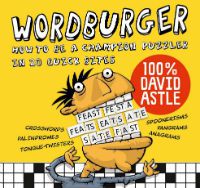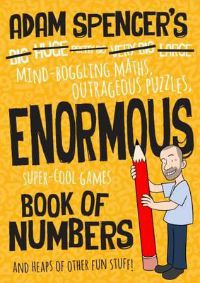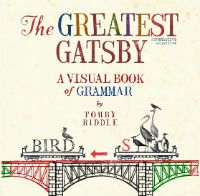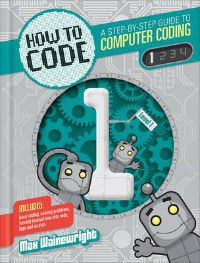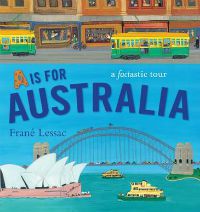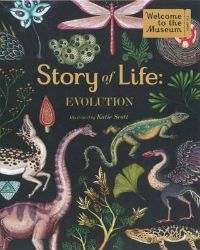Love it or hate it, school is back. If your kids spent their holidays trying to forget everything they learned the year before, these non-fiction titles are the perfect way to sneak in a bit of learning while still having fun.
Wordburger by David Astle
Cryptic crosswords are notoriously tricky, so it’s a good thing David Astle is here to help! In 20 quick bites, the king of crosswords introduces readers to concepts like anagrams, pangrams, spoonerisms, tongue-twisters and homophones, arming them with the knowledge they need to solve their very own crosswords.
This book is a word nerd’s idea of heaven, but it’s also great for kids who are a little iffy on learning language skills. Astle makes wordplay fun, and the lessons in Wordburger are very easy to digest.
Adam Spencer’s Enormous Book of Numbers by Adam Spencer
Bet you didn’t know maths could be both funny and exciting, right? In the hands of comedian Adam Spencer it is. Adam Spencer’s Enormous Book of Numbers is the kid-friendly version of his Big Book of Numbers, and it’s jam-packed with activities for budding mathematicians aged 8 to 12.
Whether you’ve got a maths-lover at home, or somebody who’s yet to be convinced, this book will have them enthralled as they decode, deduce, descramble and decipher.
The Greatest Gatsby by Tohby Riddle
Grammar can be a hard thing to grasp: is it your or you’re? It’s or its? And don’t even get me started on whether it’s weather or whether. Tohby Riddle’s The Greatest Gatsby is the perfect way to come to grips with grammar, since he presents the facts visually in the inimitable style that has made him one of Australia’s favourite illustrators.
The Greatest Gatsby starts with a simple premise: the best way to make a concept like grammar understood is through pictures. From this jumping off point, Riddle guides readers from nouns and verbs through to affixes and sentence structure.
Though grammar can be a dry subject, The Greatest Gatbsy is anything but, and readers 8+ will love the visual lessons this book has to offer.
How to Code by Max Wainewright
Kids often seem to have an innate understanding of technology, so why not foster these skills by teaching them how to code? Learning to code is a great activity to get involved in (especially as it’s now a part of the Australian curriculum), and the How to Code series by Max Wainewright is the perfect place to start. Across the How to Code series, children are taught how to debug code and use algorithms, while introducing them to HTML, Python and JavaScript. If all of that seems indecipherable to you, don’t worry! There’s also a How to Code: Parent and Teacher Guide.
And if your kids are looking for further ICT resources, like learning Scratch, programming in Raspberry Pi or how to mod Minecraft, check out our range of computing books for children.
A is for Australia by Frane Lessac
Looking for an alphabet book that’s also informative? Look no further than Frane Lessac’s ‘factastic’ A is for Australia. Do you know why some islands are named after days of the week? Or what the Fremantle Doctor is? Delve into the pages of this book to find out!
A is for Australia takes readers aged 4+ on a journey to find out what makes this country special, from the outback to the ocean. Kids can explore facts about Bondi, Kakadu, the Torres Strait Islands and many more locations. Complemented by Lessac’s award-winning artwork, this informative book introduces readers to everything Australian, from flora and fauna to Indigenous history and language.
The Story of Life: Evolution by Katie Scott
If you’ve got some young readers looking to learn more about the origin of our species, The Story of Life: Evolution by Katie Scott will answer their questions. It’s the latest in the Welcome to the Museum series which includes the stunning and fact-filled Animalium and Historium. The Story of Life: Evolution is no less impressive, with a series of fold out spreads that chronicle the journey of life in the universe over the course of the last 3.75 billion years.
These informative, naturalist-style illustrations cover plant life, insects, sea creatures, birds and dinosaurs; getting lost in the pages of this impressive book is like taking a stroll through a museum.


